Top 6 Highlights of the South Downs Way National Trail
By Mark Wright
The South Downs Way traverses over 100 miles of stunning English countryside, taking walkers on a journey through some of the most breathtaking landscapes in the country. Stretching from the historic city of Winchester in Hampshire to the coastal town of Eastbourne in East Sussex, the trail winds its way along ancient tracks, over rolling hills, and through picturesque valleys, showcasing the natural beauty and rich cultural heritage of the South Downs.
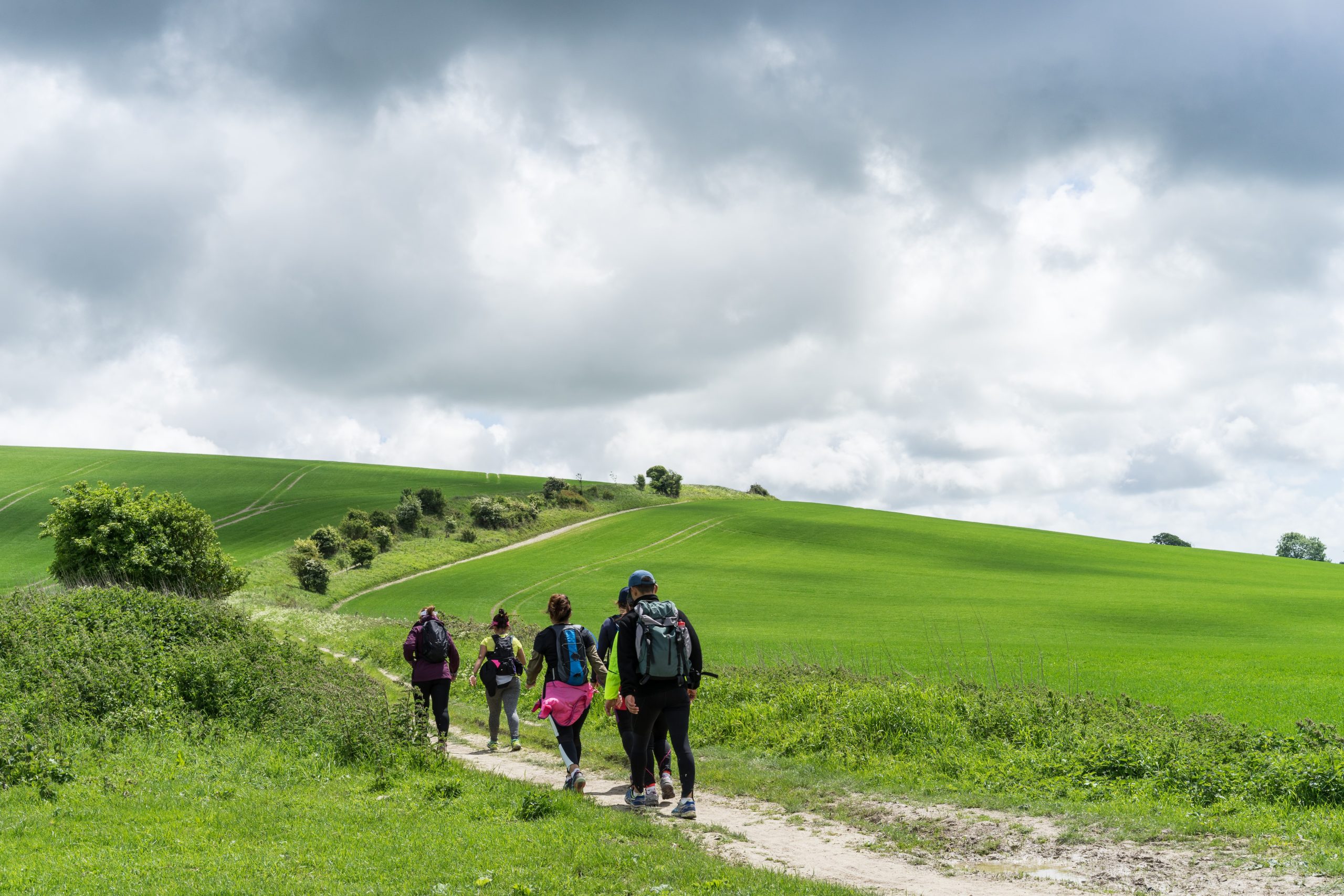
As one of Britain’s most beloved national trails, the South Downs Way attracts visitors from around the world who come to experience its diverse landscapes, fascinating history, and warm hospitality. Along the way, walkers encounter a wealth of attractions, including historic landmarks, charming villages, cosy country pubs, and an abundance of wildlife and birdlife.
Here we take a look at just six of the many highlights enjoyed on this iconic trail.
Winchester Cathedral
Situated at the heart of the historic city of Winchester, Winchester Cathedral is one of the most recognisable and historically significant cathedrals in England. With its origins dating back over a thousand years, this magnificent medieval masterpiece stands as a testament to the architectural and religious heritage of the region.
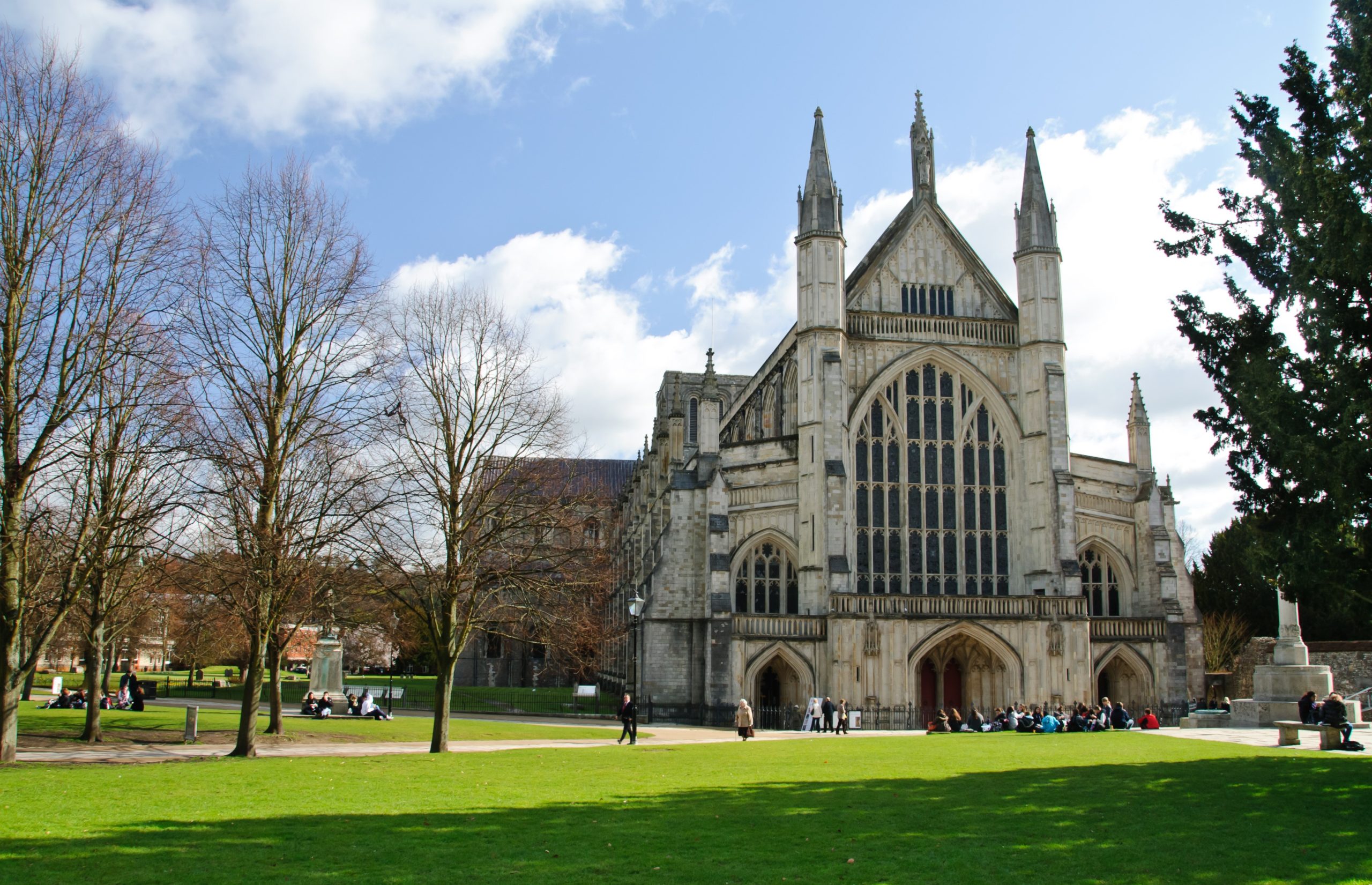
Originally founded in the 7th century, Winchester Cathedral has undergone numerous renovations and expansions over the centuries, resulting in a stunning blend of architectural styles that span the Norman, Gothic, and Renaissance periods. The cathedral’s soaring spires, intricate stone carvings, and exquisite stained glass windows are a sight to behold, delighting visitors from around the world.
Stepping inside Winchester Cathedral, visitors are greeted by a sense of awe as they explore its vast interior. From the grandeur of the nave to the intricately carved choir stalls, every corner of the cathedral is adorned with breathtaking craftsmanship and rich historical detail.
One of the highlights of Winchester Cathedral is its magnificent medieval Winchester Bible, one of the largest and finest surviving 12th-century illuminated manuscripts in the world. This priceless treasure, along with other rare manuscripts and artifacts housed within the cathedral’s library and archives, offers a fascinating glimpse into the religious and cultural heritage of medieval England.
Winchester Cathedral is also steeped in history and tradition, having played a central role in many significant events throughout the centuries. It was here that William the Conqueror was proclaimed king of England in 1066, and where countless monarchs, bishops, and nobles have been laid to rest over the years.
Today, Winchester Cathedral continues to serve as a place of worship, pilgrimage, and cultural enrichment for visitors of all ages.
Cissbury Ring
When walking from Amberley to Upper Beeding consider taking a detour to visit Cissbury Ring. It’s the largest hill fort in Sussex, with its ditch and ramparts encompassing an area of approximately 65 acres, and has a history dating back over 5,000 years.
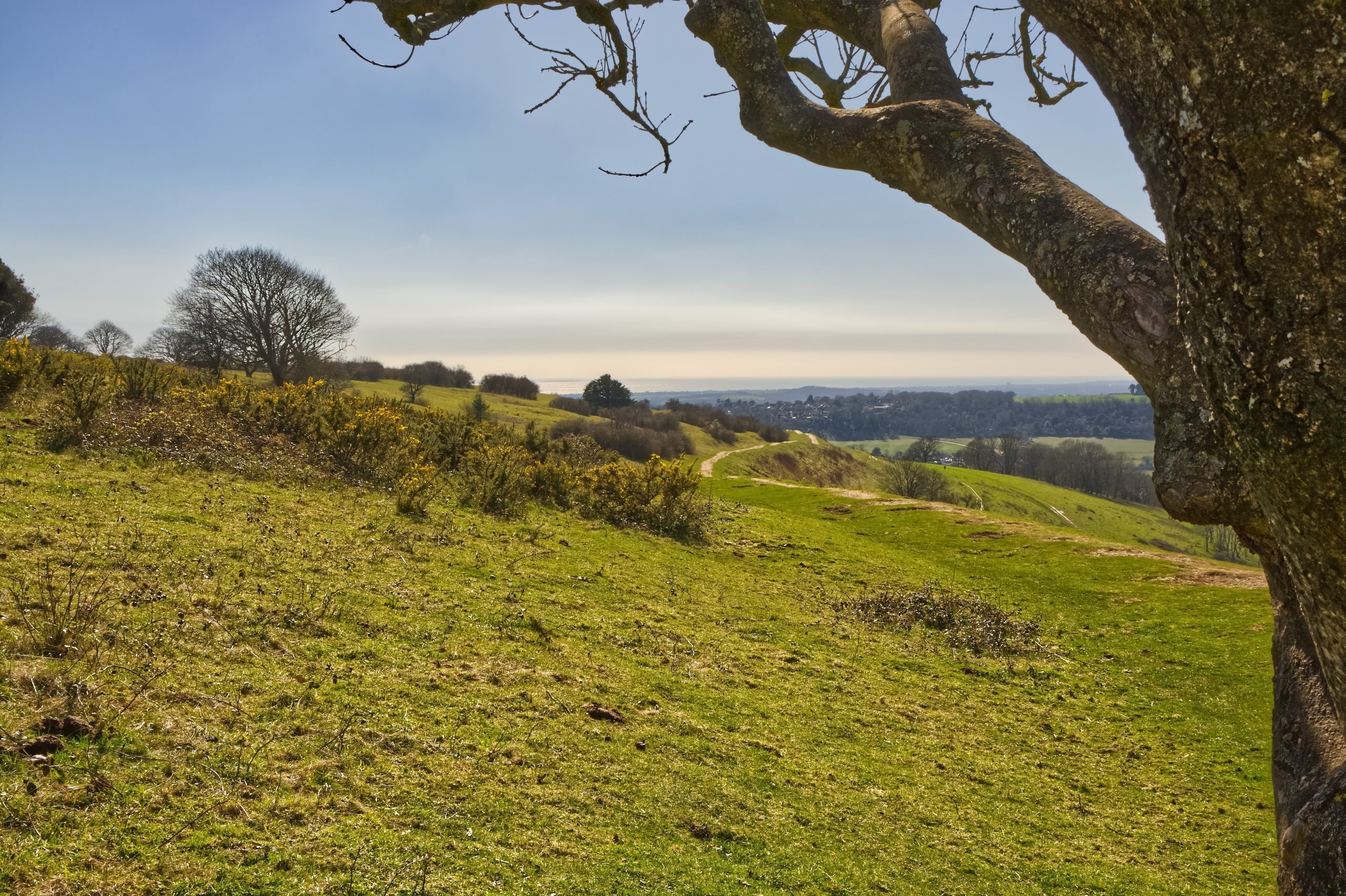
From its elevated position, the hillfort offers panoramic views of the Sussex countryside.
Archaeological excavations at Cissbury Ring have revealed evidence of human occupation dating back to the Neolithic period, with traces of ancient settlements, burial mounds, and ceremonial sites scattered across the hillfort. The site reached its pinnacle during the Iron Age, when for around 300 years it served as a tribal stronghold.
In addition to its archaeological significance, Cissbury Ring is also home to a diverse array of flora and fauna, including rare species of wildflowers, butterflies, and birds. The hillfort’s chalk grassland habitats provide vital nesting grounds for birds such as the skylark and the meadow pipit, while its ancient woodlands are teeming with wildlife.
The Devil’s Dyke
Carved by the forces of nature during the last Ice Age, Devil’s Dyke is a stunning geological feature that offers a glimpse into the ancient history of the South Downs. This deep V-shaped valley, situated just five miles north of Brighton, stretches for approximately a mile and is surrounded by rolling hills and lush greenery.
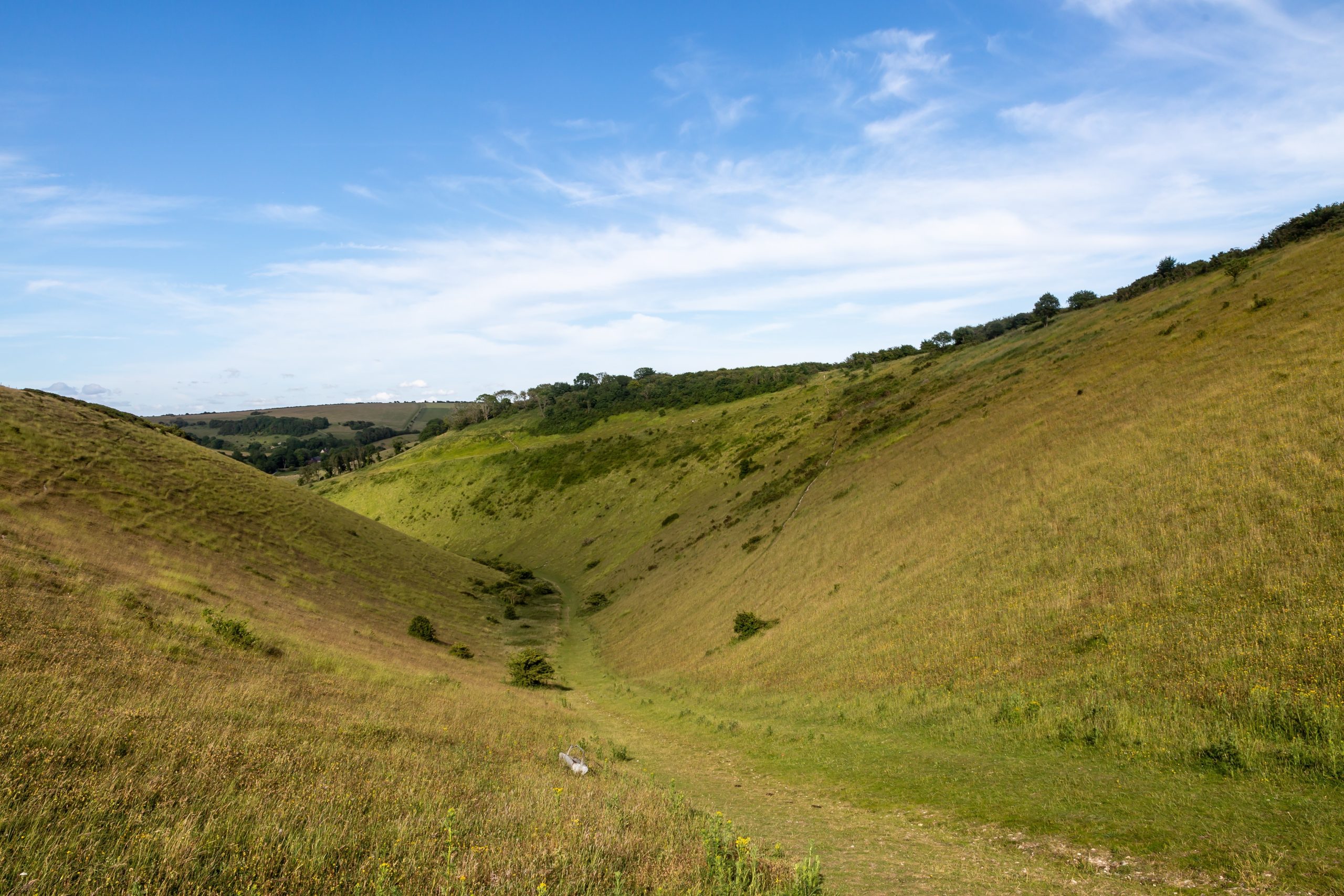
Legend has it that Devil’s Dyke was formed when the devil dug a trench to flood the surrounding countryside and drown the parishioners of the Weald. However, in reality, this impressive feature was most likely created by glacial meltwater just over 10,000 years ago in the last ice age.
Today, Devil’s Dyke is a popular destination for walkers and nature enthusiasts alike. The valley offers a network of footpaths and trails, allowing visitors to explore its rugged terrain and take in the breathtaking views of the surrounding countryside.
In addition to its natural beauty, Devil’s Dyke is also steeped in history. Archaeological excavations have revealed evidence of human activity dating back thousands of years, including the remains of ancient settlements and burial mounds. Visitors can explore these archaeological sites and learn about the area’s rich cultural heritage while enjoying the tranquility of this stunning landscape.
Whether you’re drawn to Devil’s Dyke for its geological marvels, its historical significance, or simply its natural beauty, one thing is certain, a visit to this iconic landmark is sure to leave a lasting impression. After all, the landscape painter John Constable described the panorama from Devil’s Dyke as ‘the grandest view in the world’.
Ditchling Beacon
As the highest point along the South Downs Way, Ditchling Beacon offers visitors an unparalleled opportunity to experience the breathtaking beauty of the Sussex countryside. Rising to a height of 248 meters (814 feet) above sea level, this prominent chalk hill commands panoramic 360 degree views.
![]()
Ditchling Beacon is also of archaeological interest, with remains of an Iron Age hillfort. In more recent times, the beacon played a crucial role in England’s defence. As the name suggests, Ditchling Beacon was once the site for a warning beacon, serving as one of a network of signal beacons used to warn of imminent invasion.
Ditchling Beacon is also home to a diverse array of flora and fauna, including rare species of wildflowers, butterflies, and birds. Keen-eyed visitors may even spot the elusive skylark or hear the distinctive call of the cuckoo echoing across the hillsides.
Whether you’re seeking solitude and serenity or simply hoping to soak in the stunning scenery, a visit to Ditchling Beacon is sure to be a highlight of any journey along the South Downs Way.
Lewes Castle
When staying in the picturesque town of Lewes take time to explore Lewes Castle. From its commanding position guarding the gap in the South Downs cut by the River Ouse, Lewes Castle stands as a symbol of strength, resilience, and medieval grandeur. Built shortly after the Norman Conquest of England in 1066, this historic fortress played a crucial role in securing the surrounding countryside and establishing Norman control over the region.
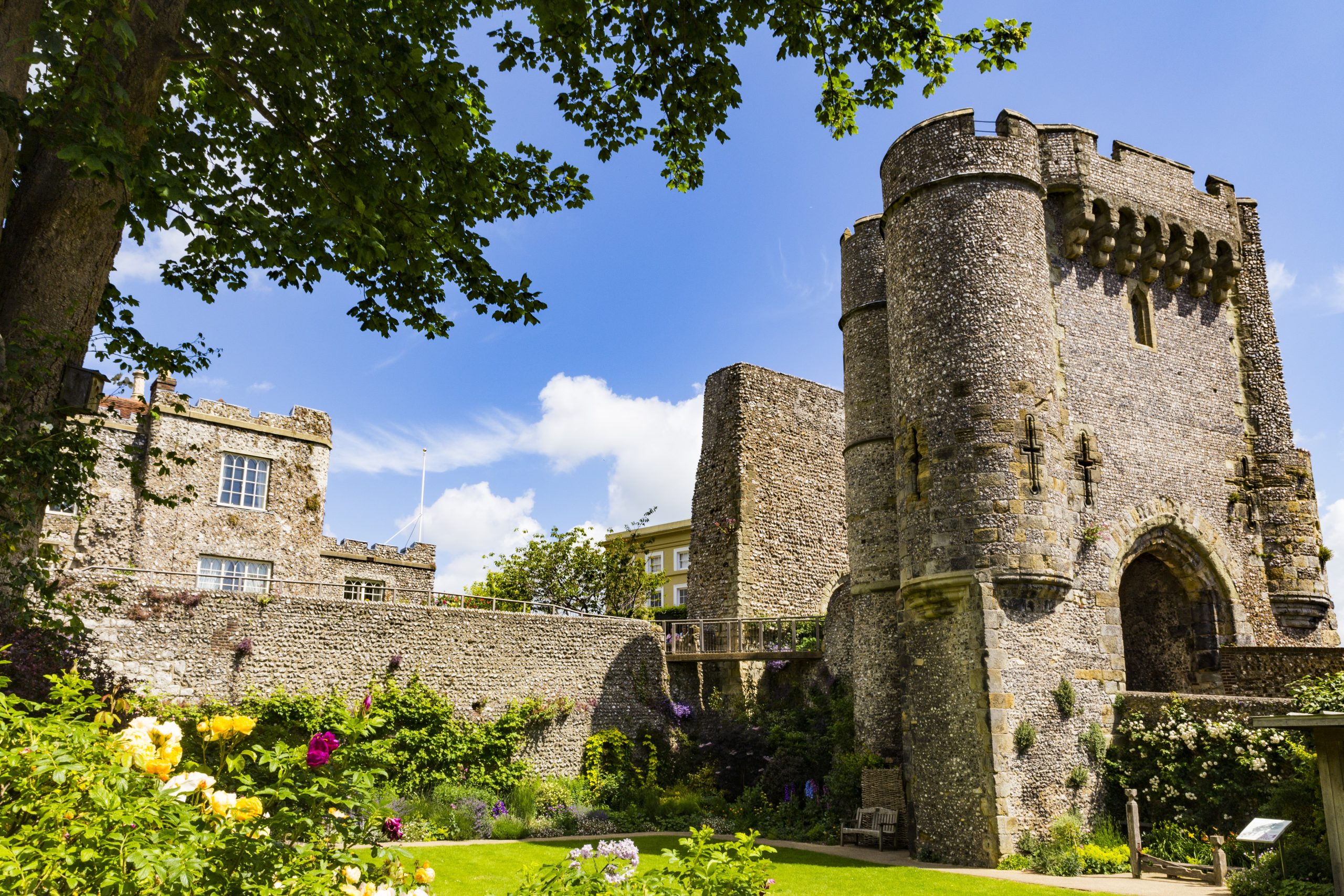
The imposing silhouette of Lewes Castle dominates the skyline, its sturdy stone walls and towering keep a testament to the military prowess of its builders. From its strategic vantage point, the castle offers commanding views of the town below and the rolling hills of the South Downs beyond.
Stepping inside Lewes Castle, visitors are transported back in time to the tumultuous medieval period, when England was torn apart by war and political upheaval. Explore the castle’s labyrinthine corridors, climb to the top of its mighty battlements, and imagine the clash of swords and the thunder of hooves that once echoed within its walls.
One of the highlights of Lewes Castle is its unique architecture, which reflects the evolving military tactics and technologies of the time. Marvel at the intricately constructed gatehouse, with its imposing portcullis and murder holes designed to repel would-be attackers. Admire the well-preserved remains of the keep, where medieval lords once held court and plotted their conquests.
In addition to its military significance, Lewes Castle also served as a symbol of power and authority for its owners, including the powerful de Warenne family who ruled over the region for centuries. Today, the castle stands as a monument to Lewes’ rich history and cultural heritage, offering visitors a fascinating glimpse into the past.
Seven Sisters
Stretching for several miles along the Sussex coastline, the Seven Sisters chalk cliffs are a breathtaking natural wonder that captivate visitors with their sheer beauty and dramatic coastal scenery. A must-visit destination for nature enthusiasts and photographers alike.
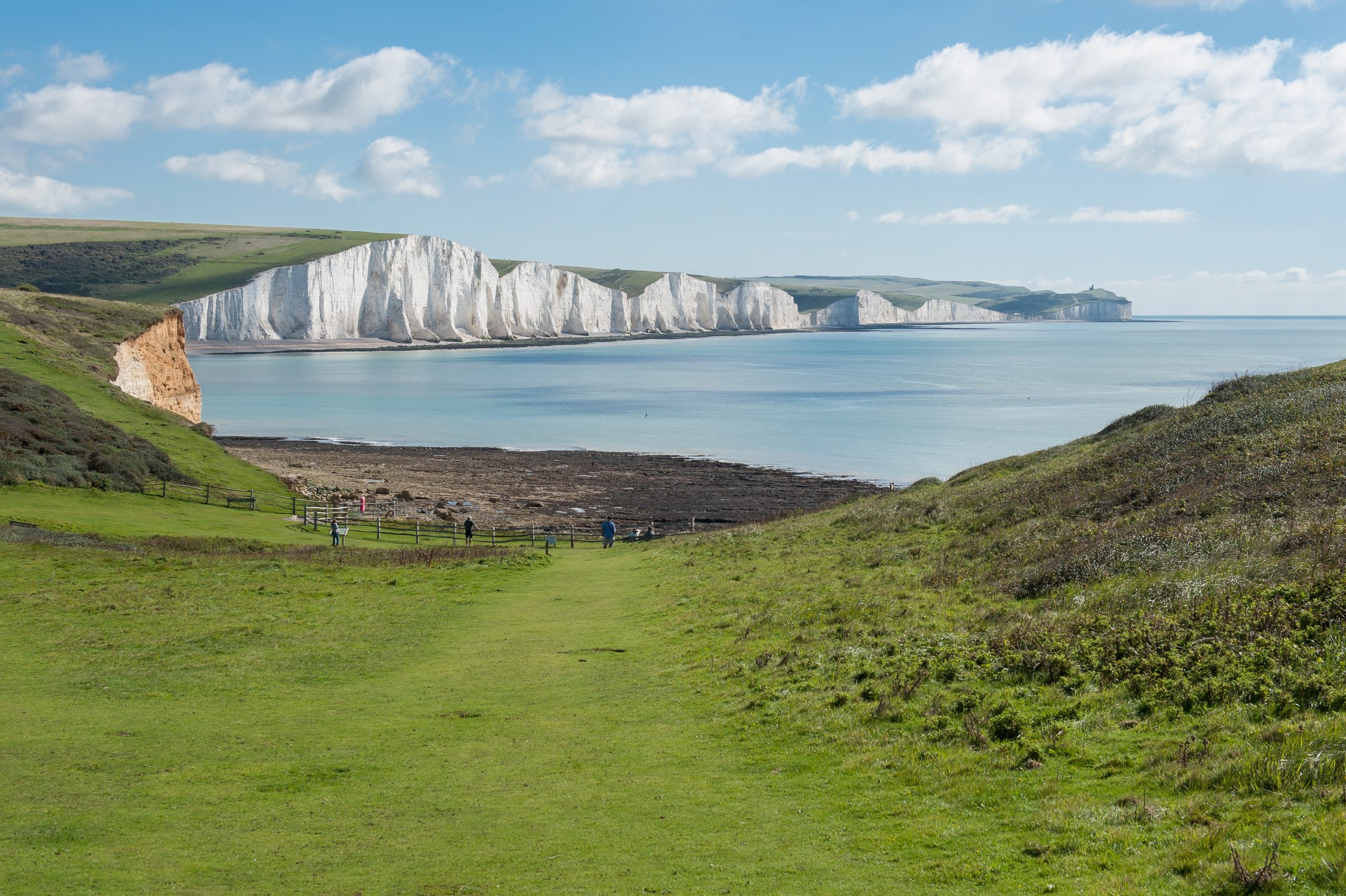
Rising to heights of up to 160 meters (525 feet) above sea level, the Seven Sisters offer panoramic views of the English Channel and the surrounding countryside, with vistas that stretch as far as the eye can see. The chalk cliffs stand in stark contrast to the blue-green waters below, creating a striking visual spectacle.
The geological history of the Seven Sisters cliffs dates back millions of years, to a time when the area was submerged beneath a shallow sea. Over millennia, the gradual accumulation of marine sediments and the uplifting of the earth’s crust gave rise to the chalk formations that we see today, sculpted by the relentless forces of wind and waves into their distinctive shape.
In addition to their scenic splendour, the Seven Sisters Cliffs are also home to a rich diversity of plant and animal life, including rare species of wildflowers, seabirds, and butterflies. The chalk grasslands that blanket the cliffs provide vital habitat for these creatures, making the area a haven for wildlife enthusiasts and conservationists alike.
We have a choice of 4 holidays on the South Downs Way. You can walk the whole route from Winchester to Eastbourne in anything from 6 to 9 days. If you don’t have time to do the whole route, we have separate holidays covering the western section from Winchester to Amberley and the eastern section from Amberley to Eastbourne. Finally, there’s our South Downs Short Break, a round walk over Beachy Head and the Seven Sisters, between Eastbourne and Alfriston. If we’ve inspired you to walk some of, or perhaps all of, the South Downs Way, please don’t hesitate to get in touch. We’d be delighted to answer any questions you may have. You can email us [email protected] or call 017687 72335.